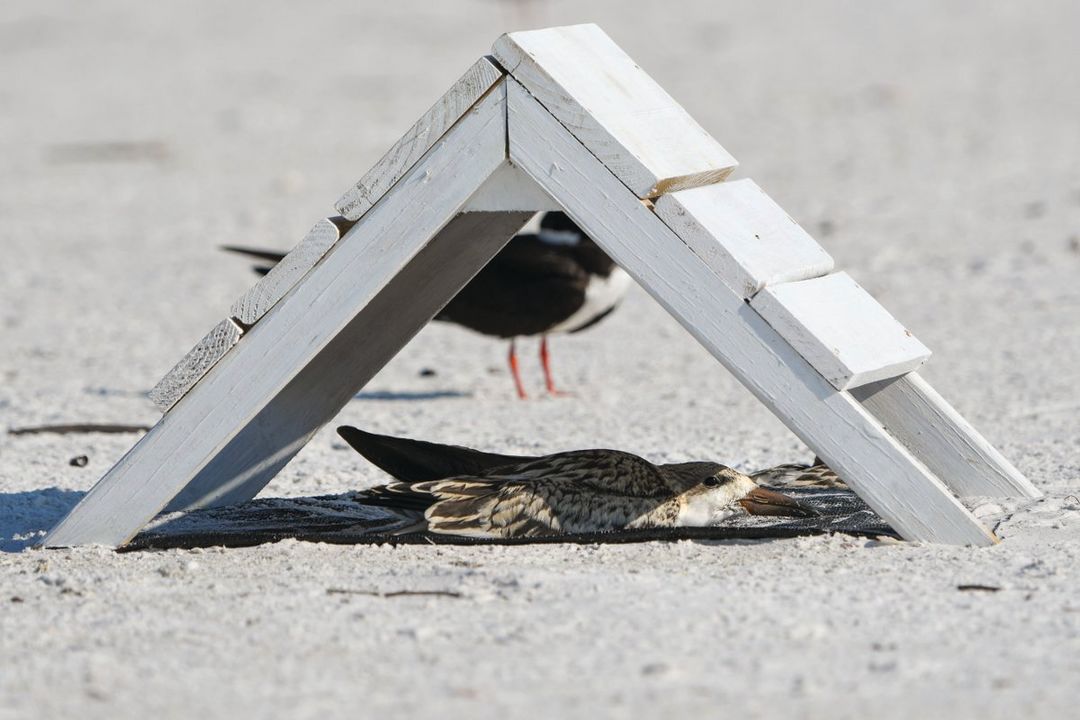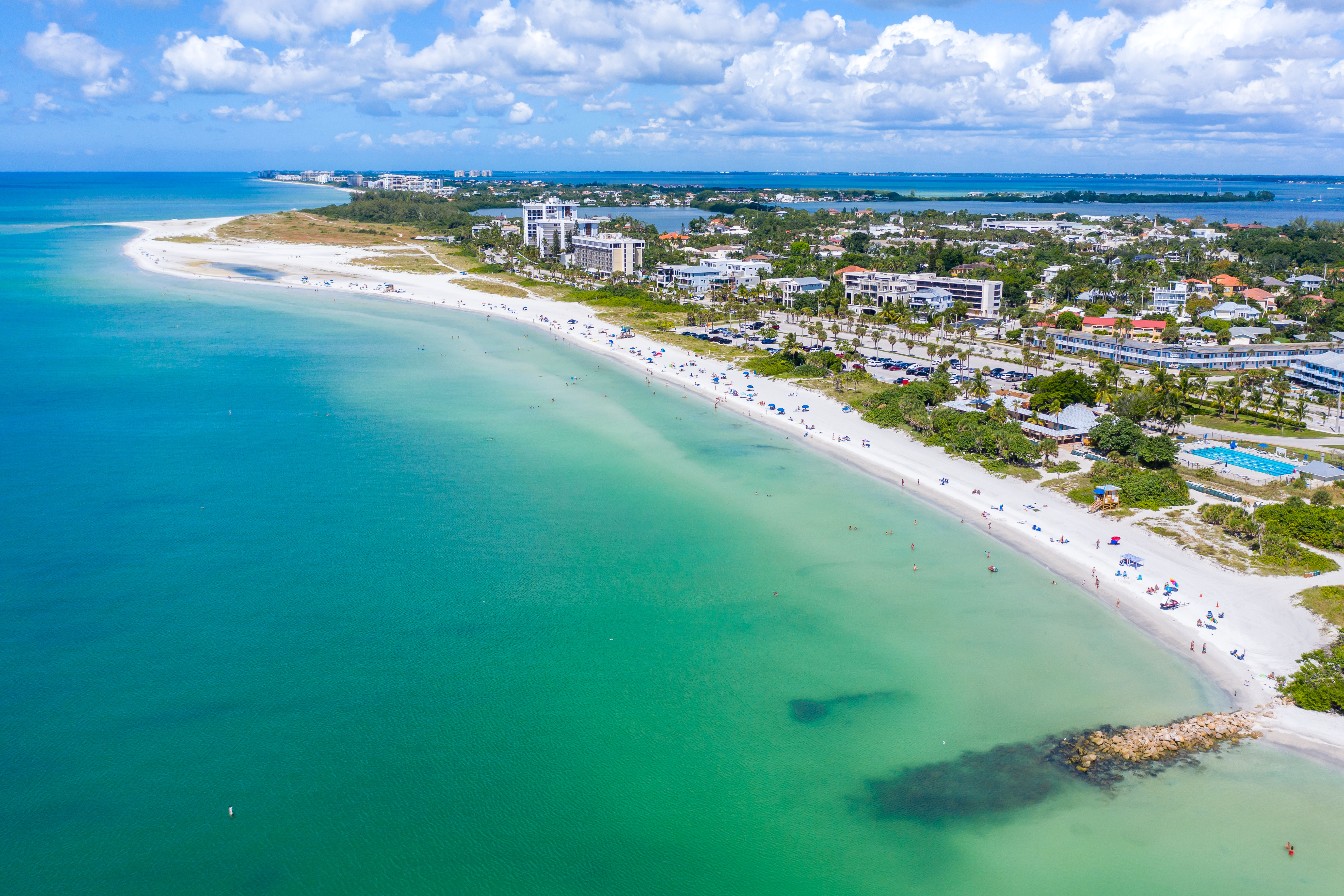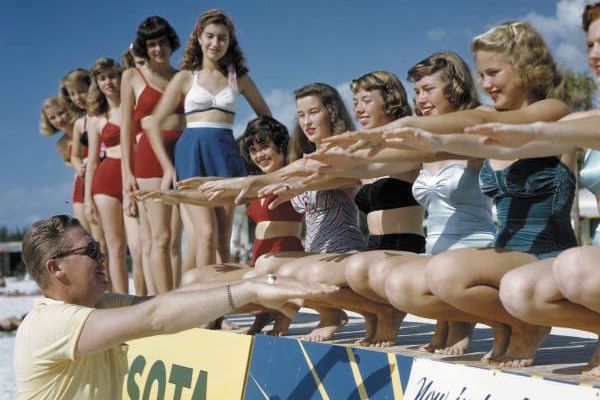Small Handmade 'Chick Huts' Help Our Beach Birds Stay Cool

A black skimmer enjoys the shade of a hand-built shade structure on Lido Beach.
Image: Miri Hardy
If you’ve strolled down Lido Beach recently, you may have seen some new architecture—not just hulking waterfront mansions, but small wooden “chick huts,” or shade structures, for shore birds.
Turns out that the birds that nest on our shorelines, like black skimmers and least terns, need a break from the abundant sunshine, just like we do. The birds lay eggs directly on top of the sand, which can become super hot—up to 120 degrees Fahrenheit. The birds shade the eggs with their bodies and open their mouths to release heat, but their bodies can still become too hot.
“Typically, black skimmers hang out at the shoreline, get their belly feathers wet, then go back to their nests to cool down the eggs,” says Audubon Florida shorebird stewardship and monitoring coordinator Kylie Wilson, whose purview includes Sarasota County beaches.
As the birds’ eggs hatch and the chicks grow larger, the babies also try to cool themselves by wandering down to the water or, in some cases, taking refuge under beachgoers’ umbrellas or chairs. Those aren’t the safest spots for birds, especially the youngest, who can’t fly. Plus, Wilson says, “We’re going to have hotter and hotter summers due to climate change. The birds need a spot in front of their colony near the waterline.”
The huts were built by Audubon volunteers Sandy Ulrikson and her late husband, Jerry. Audubon had already built huts that were loved by local least terns, but, Wilson says, the skimmers refused to use them.
“They were so agitated by the wood color!” says Wilson. “So Jerry and Sandy made about 20 chick huts and painted them white, and the skimmers love them. For some reason, they didn’t like the contrast of the wood against the sand.”
The Ulriksons built the chick huts in the birds’ preferred shapes: teepees for least terns and flat boxes for skimmers. Made of wood and painted with nontoxic paint, the huts are expected to last for at least three to five nesting seasons.
But do the birds like them? Yes. Wilson says she has spotted up to 20 tiny least tern chicks huddling under one hut. That’s how desperate for shade the birds get.
Even though Jerry passed away last summer, Wilson says his legacy will live on. “He even made blueprints to share with Audubon Florida staff in case we want to make more,” she says. “These chick huts are a lasting contribution that will help our birds for years to come.”
Tips for Keeping Shore Birds Safe
Shore birds are particularly vulnerable to disturbances. Here are some ways to keep them safe, particularly during nesting season, which runs from March through August.
Give birds lots of space. Walk around big groups of birds, and don’t chase them. “They need to conserve their energy,” says Wilson.
Don’t bring dogs on the beach. Dogs are seen as predators to shore birds—and they aren’t allowed on most Sarasota County beaches, anyway.
Don’t feed birds or leave food or trash behind. This can attract predatory birds, like gulls and crows, to the area.
Respect posted signage. “If you see a sign, read it,” says Wilson. “We work to educate the public so they can be mindful of the birds when stewards aren’t there.”



